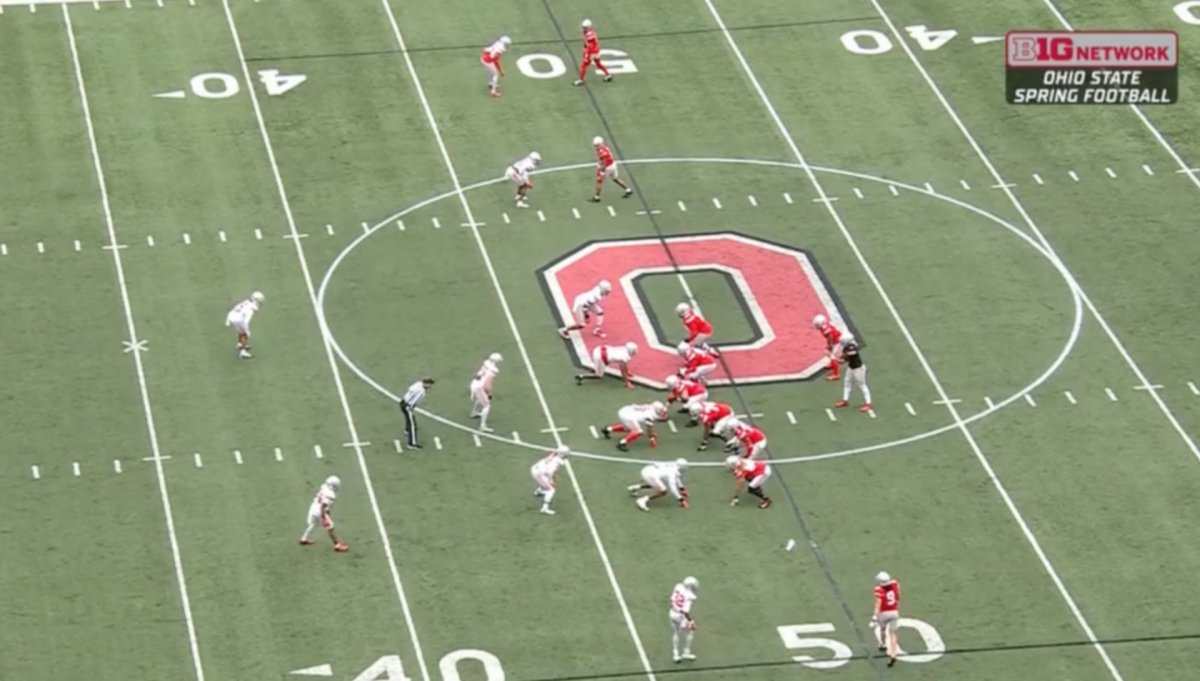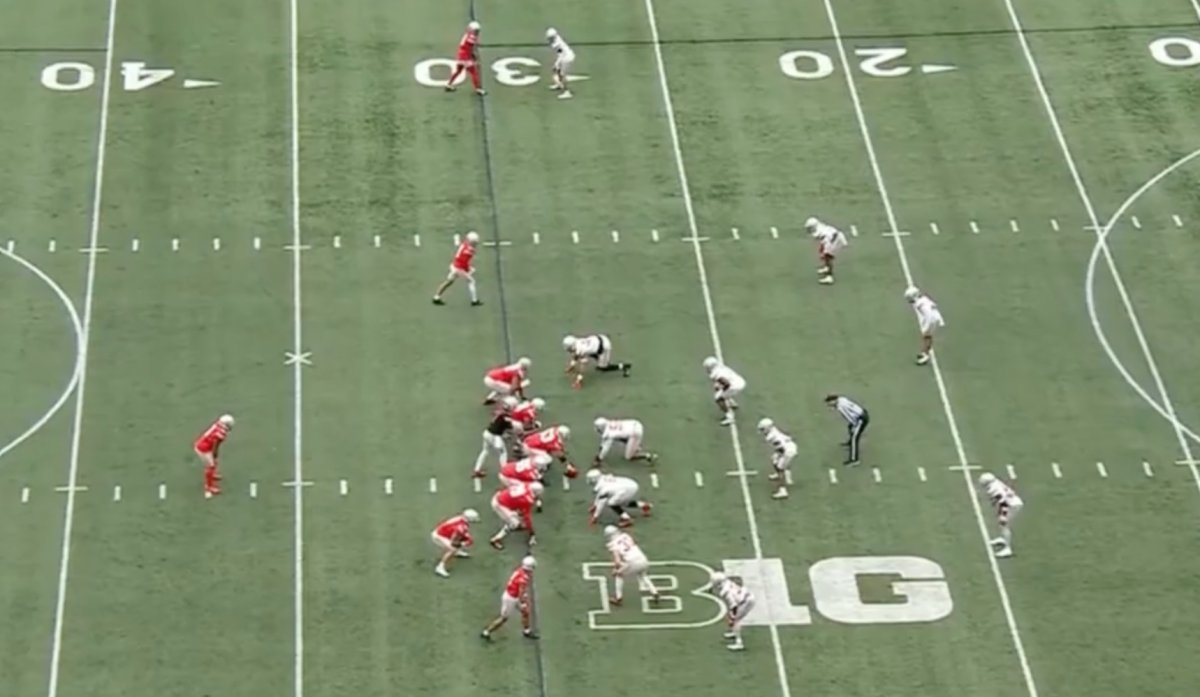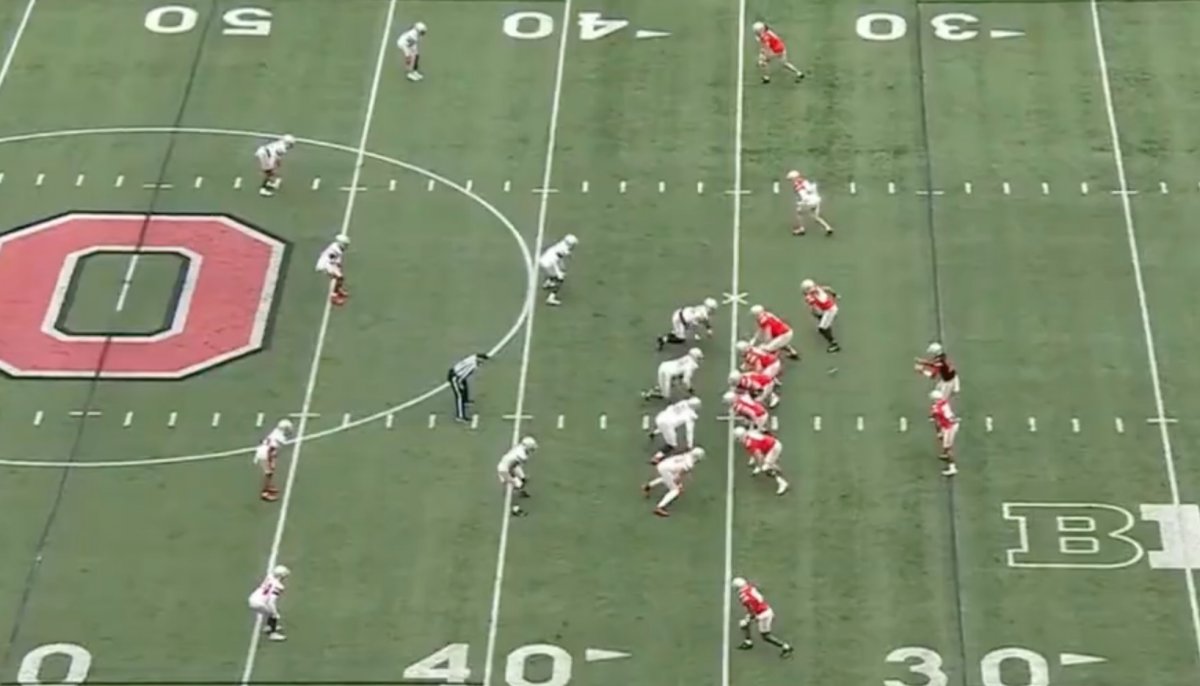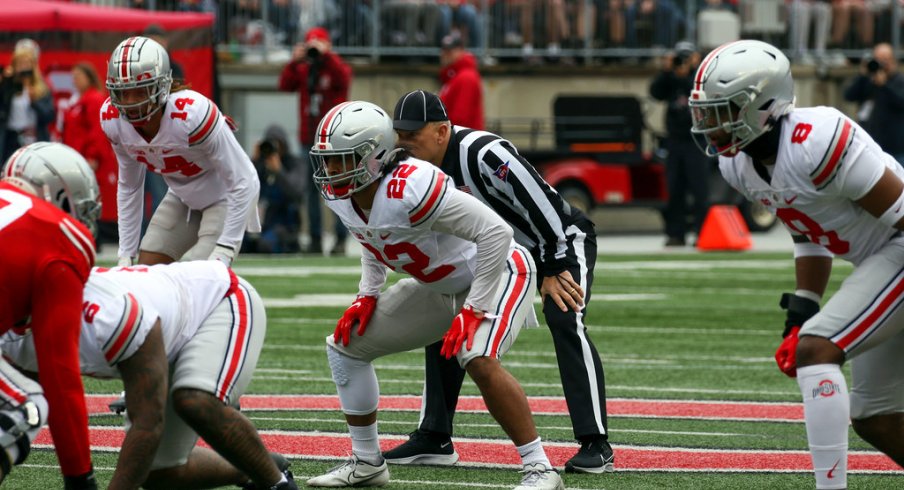Three-star in-state linebacker CJ Sanna commits to Ohio State.
"Basic" is a very relative term.
As Ryan Day met with the media one final time prior to last week's spring scrimmage inside Ohio Stadium, he tried to downplay expectations for his new-look defense. "It’ll be very, very basic," Day said of Jim Knowles' plan, noting "he’s not going to do a whole lot of his stuff in this game," and that the focus for the new-look Silver Bullets would instead be on fundamentals and effort.
For those of us who have spent the past five months studying what Knowles showed at Oklahoma State, we know that the Gray team barely scratched the surface of what we know is inside the veteran coach's playbook. But compared to what Ohio State's defense has looked like for nearly a decade, the Scarlet & Gray game was remarkable for the amount of schematic diversity shown in the secondary alone.
On one hand, Day was not lying about the lack of complexity in play-calling on both sides of the ball. While his offense employed mostly 2x2 formations from the shotgun with very little pre-snap motion, the defense sat in a 4-2-5 alignment all afternoon.
Knowles likes to set his 3-technique tackle to the side of the running back in shotgun looks, though there were a few occasions (mostly in clear passing situations) where he called for different alignments up front. But throughout the day, the Buckeyes didn't show much variation along the defensive line or at linebacker.
In the secondary, however, we saw quite a bit. Knowles' base defense employs three different pre-snap alignments for his defensive backs, the first of which is what most people expect of a Nickel look, with the corners and slot defender pressed up on the split receivers while the safeties lined up 10 yards off the ball:

But Knowles will also pull that slot defender back off the line and show a three-deep safety look (hence why the slot defender is called a Nickel Safety, not a corner):

Finally, Knowles showed quite a bit of what he calls a 'shell' look with all five players lined up 10 yards deep:

From each of these three looks, Knowles can employ a host of coverages. His goal is simply to create a muddy picture for both the quarterback and his opposing play-caller, hoping to get them out of rhythm by trying to guess what his defense will do after the ball is snapped.
“We want to be able to create indecision for the offense, and particularly for the offensive coordinator,” Knowles said when he was formally introduced as the new DC in Columbus back in February. “So we want to create two to three simple pictures, that when you look at it, or the offensive coordinator looks at it, he can't tell what's going to happen from that same picture. And that we have the ability to really do anything out of that same picture or that look.”
In that vein, perhaps there is no better opponent to practice against than the nation's best offense, led by a Heisman contender under center. On the game's very first snap, we saw Knowles show something Stroud certainly isn't used to seeing in practice (at least not until last month). At the snap, the Jack (stand-up defensive end) bailed out into coverage, giving the defense eight defenders while rushing just three and playing a Cover 3 zone that blanketed Stroud's primary reads, forcing the talented Buckeye QB to check-down to his running back for only a short gain.
For long-time readers of Film Study, I recognize that the term Cover 3 comes with a host of eye rolls, given the prevalence with which the concept was shown by recent Buckeye vintages. But very quickly, Knowles showed that such reliance on one concept is a thing of the past, showing a host of coverages and variations.
For instance, there were multiple occasions in which we saw the Buckeyes play a type of Quarters coverage known as "Bracket" in which the safeties double-team the slot receivers, hoping to force the ball out to the sidelines where the corners are manned up:
We saw other types of Quarters coverage as well. In the clip below, we see the three defenders at the bottom of the screen pass off the two receivers in what many call MOD technique. If the outside receiver had run vertically, the corner would have stayed on him in man, but since he cut inside on a shallow route, the corner passes him to the linebacker while the safety takes the #2 receiver downfield:
All told, Knowles' secondary played Cover 1 (man-free), Tampa 2 zone, at least three kinds of Cover 3 (strong roll, weak roll, drop-8), and five kinds of Quarters (MOD, MEG, Palms, Bracket, drop-8) during the concluding scrimmage of spring practice. Not since Jim Heacock was calling the defense in the late 2000s has Ohio State shown such multiplicity on that side of the ball.
While some may believe that this is too much for college players and that they should be allowed to 'play fast' by not having to think too much about their responsibilities within a given play call, this approach certainly forces the opposing brain trust to think harder as well. As seen in the previous clip above, perhaps the best QB in America couldn't find an open receiver on 3rd & 6 and was forced to dump it down to his running back instead of one of the many blue-chip wideouts on the field. No matter how you score it, that's a win for the defense.
There were, of course, some breakdowns in coverage, especially on deep over routes such as Jaxon Smith-Njigba's early touchdown reception. But for only having had 14 previous practices in which to install so many new concepts, Ryan Day must be thrilled with what he saw on Saturday.
It is also worth noting that the biggest issue with the 2021 Buckeye defense was not its ability to cover receivers but to simply stop the run. Given the format of the spring scrimmage, we weren't able to see much in this department as the game was a glorified 7-on-7 contest. On the few occasions that the quarterbacks did handoff, one had to pay close attention to see how Knowles' approach to stopping the run is different than his predecessors.
First and foremost, the OSU defensive line is not simply trying to penetrate gaps and shoot upfield to create plays in the backfield anymore. Rather, the front four are tasked with occupying blockers to keep the linebackers clean and unblocked, often pinching inside to clog up the middle and force the ball carrier to bounce outside. Once the runner changes his course, the safeties are tasked with closing quickly to seal those edges and make tackles.
This philosophy, known in coaching circles as 'Spill & Kill' was executed perfectly in the clip below. Watch as Taron Vincent (#6) eats up two blocks for the entirety of the play, which keeps linebacker Tommy Eichenberg untouched and ready to make a tackle if the ball bounced outside in his direction. Meanwhile, the end to the boundary darts inside to occupy the left tackle, leaving Josh Proctor free to step down from his spot as the Bandit (boundary safety) and make the stop.
Between the numerous responsibilities in coverage and their involvement in stopping the run, there may be no more important position in the unit than safety. While Tanner McCallister is all but a lock to start at the nickel spot after transferring from Stillwater, a steep learning curve remains for players like Ronnie Hickman, Kourt Williams, Lathan Ransom, and Proctor.
"I'm always worried about depth back there," Knowles told the media on Saturday when asked about the position, as Williams, Ransom, and Proctor are all still dealing with injuries that kept them from fully participating in spring ball.
But health aside, perhaps the biggest reason why the OSU coaches believe what they put on display last weekend in the 'Shoe was considered 'basic' is the fact that the signature element of a Jim Knowles scheme was absent. The Buckeyes didn't blitz at all, which played a critical role in vaulting Oklahoma State to the top of many defensive statistical rankings last season.
"We always talk about coverage and rush working together," Knowles said in an interview last summer. "Everybody’s worried about the coverage, but the rush has a faster opportunity to affect the play, so get some guys in there that are just going to be bowling balls with butcher knives."
For Knowles, Saturday's spring game undoubtedly felt like he wasn't showing all his cards as thousands of OSU fans looked on. But for those paying close attention, the differences between this version of the Buckeye defense and what we've seen for quite some time couldn't be more drastic.



